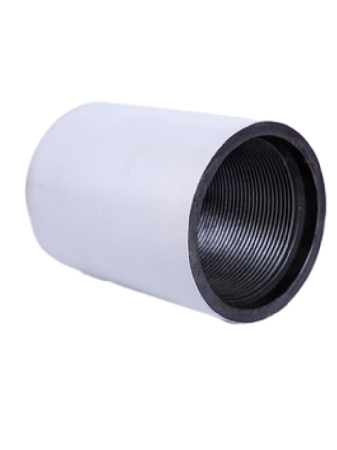- Afrikaans
- Albanian
- Amharic
- Arabic
- Armenian
- Azerbaijani
- Basque
- Belarusian
- Bengali
- Bosnian
- Bulgarian
- Catalan
- Cebuano
- Corsican
- Croatian
- Czech
- Danish
- Dutch
- English
- Esperanto
- Estonian
- Finnish
- French
- Frisian
- Galician
- Georgian
- German
- Greek
- Gujarati
- Haitian Creole
- hausa
- hawaiian
- Hebrew
- Hindi
- Miao
- Hungarian
- Icelandic
- igbo
- Indonesian
- irish
- Italian
- Japanese
- Javanese
- Kannada
- kazakh
- Khmer
- Rwandese
- Korean
- Kurdish
- Kyrgyz
- Lao
- Latin
- Latvian
- Lithuanian
- Luxembourgish
- Macedonian
- Malgashi
- Malay
- Malayalam
- Maltese
- Maori
- Marathi
- Mongolian
- Myanmar
- Nepali
- Norwegian
- Norwegian
- Occitan
- Pashto
- Persian
- Polish
- Portuguese
- Punjabi
- Romanian
- Russian
- Samoan
- Scottish Gaelic
- Serbian
- Sesotho
- Shona
- Sindhi
- Sinhala
- Slovak
- Slovenian
- Somali
- Spanish
- Sundanese
- Swahili
- Swedish
- Tagalog
- Tajik
- Tamil
- Tatar
- Telugu
- Thai
- Turkish
- Turkmen
- Ukrainian
- Urdu
- Uighur
- Uzbek
- Vietnamese
- Welsh
- Bantu
- Yiddish
- Yoruba
- Zulu
Understanding API 5CT Casing Couplings in Oil and Gas Industry Applications
Understanding API 5CT Casing Couplings Key Aspects and Importance
API 5CT casing couplings are essential components in the oil and gas industry, particularly in drilling operations. They are designed to connect casing pipes used in boreholes, ensuring the integrity and stability of the wellbore. The API (American Petroleum Institute) established a standardized specification for casing couplings, which helps maintain uniformity and reliability across different manufacturers and applications.
Casing is critical for the structural integrity of a well. It provides a protective barrier against the surrounding geological formations, preventing collapse and contamination of the oil or gas reservoir. Casing couplings play a pivotal role in this system, acting as connectors between individual casing pipes. This article explores the significance, specifications, and applications of API 5CT casing couplings.
Significance of API 5CT Casing Couplings
Casing couplings not only facilitate the connection of pipes but also contribute to the overall performance of drilling operations. They must withstand high pressures and temperatures encountered during drilling, which requires them to be made from robust materials. API 5CT specifications outline the necessary mechanical properties, dimensions, and quality standards for these couplings, ensuring they can endure the harsh conditions in the oil and gas extraction process.
Moreover, the interoperability of casing couplings is vital for efficient operations. Using standardized components means that different suppliers can provide compatible pieces, leading to reduced downtime and improved efficiency in drilling operations. This standardization also simplifies logistics and reduces costs associated with custom fittings.
api 5ct casing coupling

Specifications of API 5CT Casing Couplings
API 5CT provides detailed specifications for casing coupling types including their dimensions, material grades, and manufacturing processes. Couplings typically fall into several categories, such as short couplings, long couplings, and special couplings designed for specific applications. The two main material grades used in these couplings are J55 and K55, with additional grades like N80, L80, and P110 available for more demanding environments.
The specifications ensure that couplings meet stringent quality standards in terms of mechanical strength, corrosion resistance, and overall durability. These properties are critical for maintaining the structural integrity of wellbores, particularly in challenging environments.
Applications of API 5CT Casing Couplings
API 5CT casing couplings find widespread application in various stages of drilling operations, including the construction and completion of wells. They are used in both onshore and offshore drilling rigs, allowing operators to adapt to different geological conditions. The use of API-certified couplings ensures that safety and operational efficiency are prioritized, which is crucial for successful exploration and production activities.
In conclusion, API 5CT casing couplings are indispensable components in the drilling industry, providing reliable connections that ensure the safety and efficiency of well construction. Their adherence to international standards promotes consistency and quality, affirming their critical role in the oil and gas sector. As exploration and production activities continue to evolve, the importance of robust and standardized casing couplings will remain paramount.
-
Tubing Pup Joints: Essential Components for Oil and Gas OperationsNewsJul.10,2025
-
Pup Joints: Essential Components for Reliable Drilling OperationsNewsJul.10,2025
-
Pipe Couplings: Connecting Your World EfficientlyNewsJul.10,2025
-
Mastering Oilfield Operations with Quality Tubing and CasingNewsJul.10,2025
-
High-Quality Casing Couplings for Every NeedNewsJul.10,2025
-
Boost Your Drilling Efficiency with Premium Crossover Tools & Seating NipplesNewsJul.10,2025







